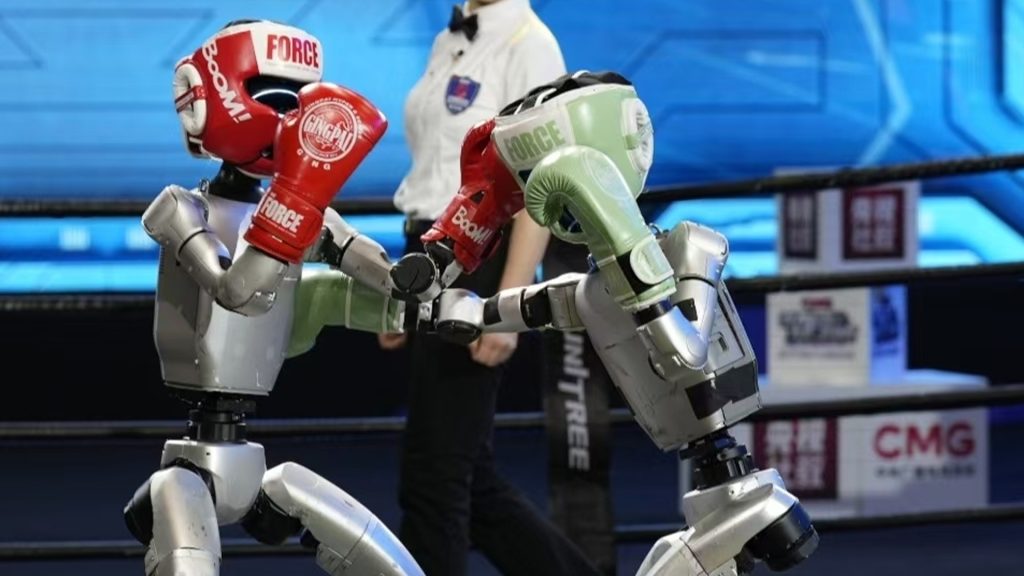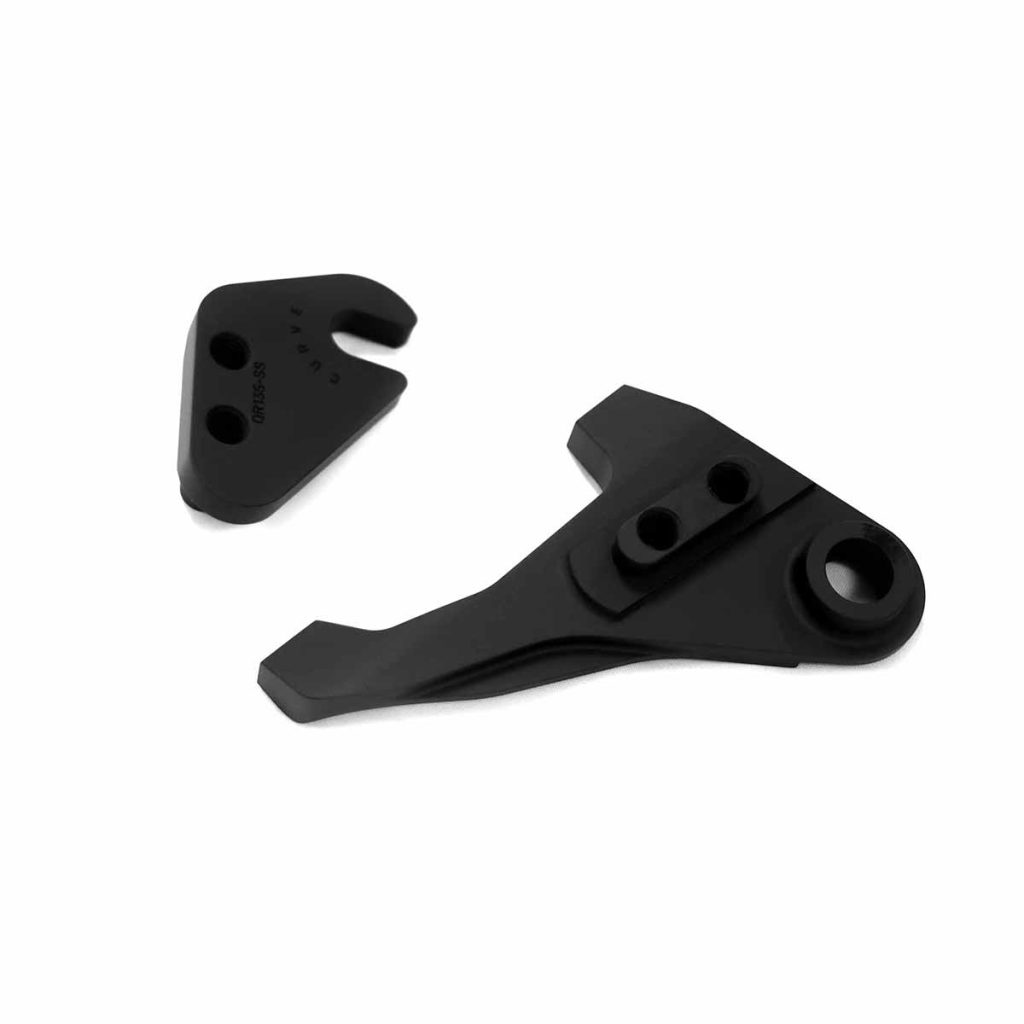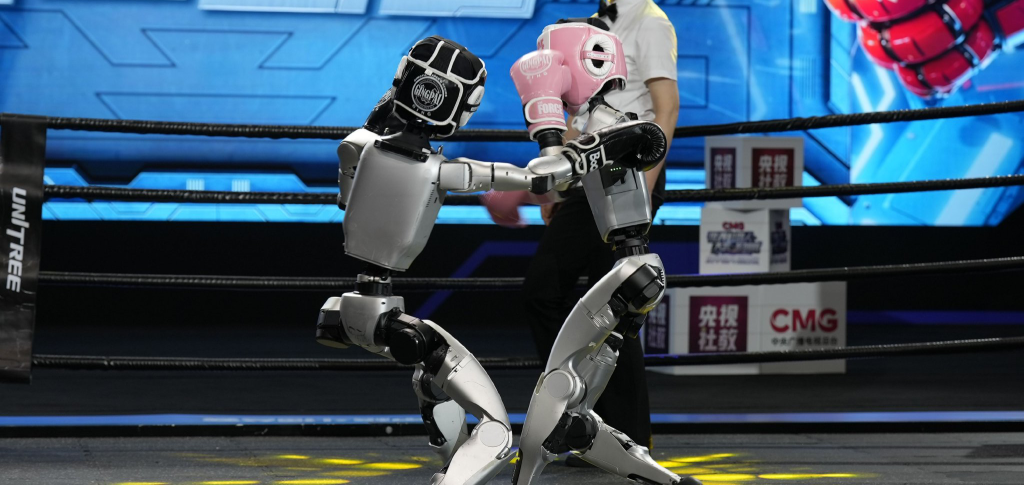How to Achieve High Precision in CNC Machining Humanoid Robot Joints?
In the rapidly advancing field of humanoid robotics, the precision of CNC-machined joints directly impacts a robot’s mobility, durability, and overall performance. Tolerances as tight as ±0.005mm are often required for seamless movement and load-bearing capabilities. This article delves into the critical strategies and technologies to achieve such precision, tailored for B2B clients in the robotics manufacturing sector.

Why Do Humanoid Robot Joints Require Ultra-Precision Machining?
Humanoid joints operate under complex loads—compressive, tensile, and torsional forces—while requiring smooth motion. Inadequate precision leads to:
- Reduced service life (e.g., joint failure at 5,000 cycles vs. 50,000+ for precision parts)
- Inaccurate movement (positioning errors >0.1mm render tasks like object manipulation impossible)
- Excessive noise and vibration, compromising user experience
1. Key Precision Metrics for Joints
- Positioning Accuracy: ±0.01mm for end-effectors, ±0.05mm for major joints
- Repeatability: ≤0.003mm for robotic arms performing assembly tasks
- Surface Roughness: Ra ≤0.4μm for mating surfaces, Ra ≤0.8μm for non-critical areas
How Does Material Selection Impact Machining Precision?
Choosing the right material is the first step toward precision. Common materials and their machining considerations:
1. Titanium Alloys (e.g., Ti-6Al-4V)
- Machining Challenges: High chemical reactivity causes tool adhesion, while low thermal conductivity leads to heat buildup.
- Solutions:
- Use carbide tools with TiAlN coatings (reduces friction by 30%)
- Adopt cryogenic cooling (-196°C liquid nitrogen) to maintain dimensional stability
- Example: Boston Dynamics’ Atlas robot uses cryogenically machined titanium joints, achieving ±0.008mm precision.
2. High-Strength Aluminum (e.g., 7075-T6)
- Machining Tips:
- Maintain cutting speeds between 150-250 m/min to avoid work-hardening
- Implement post-machining stress relief (175°C for 3 hours) to prevent warpage
- Case Study: Toyota’s Human Support Robot uses stress-relieved aluminum joints, reducing positional errors from 0.03mm to 0.01mm.
3. Engineering Plastics (e.g., PEEK)
- Precision Strategies:
- Use diamond-coated tools for edge definition
- Control ambient temperature (23±2°C) to minimize thermal expansion
- Example: SoftBank’s Pepper robot uses PEEK joints machined with 5-axis mills, achieving Ra 0.2μm surface finish.
Why Is 5-Axis Machining Essential for Complex Joint Geometries?
Traditional 3-axis machining struggles with the intricate shapes of humanoid joints, such as harmonic drive housings and ball screw nuts. 5-axis technology offers:
1. Single-Setup Machining
- Advantages:
- Reduces cumulative errors from multiple setups (e.g., from 0.05mm to 0.01mm)
- Enables simultaneous machining of intersecting features (e.g., bore holes at 45° to main axis)
- Example: FANUC’s ROBOTiN uses 5-axis mill-turn centers for its elbow joints, cutting setup time by 60%.
2. Tool Path Optimization
- Strategies:
- Use tangential entry/exit for reduced tool marks
- Implement adaptive feed rates (e.g., slower at corners, faster on straight paths)
- Example: Universal Robots’ UR10e joints use trochoidal milling, improving surface finish by 40%.
How to Control Thermal Distortion in Precision Joint Machining?

Thermal changes as small as 1°C can cause 0.002mm/m expansion, critical for long joints (e.g., thigh bones in humanoid legs).
1. Machine Tool Temperature Control
- Solutions:
- Install spindle preheating cycles (run at 70% speed for 30 minutes before machining)
- Use temperature-compensating CNC controls (e.g., Heidenhain’s Thermally Activated System)
- Case Study: Hyundai’s H-1 humanoid uses temperature-controlled machining, maintaining ±0.005mm over 8-hour runs.
2. Coolant Strategies
- Best Practices:
- For titanium: Use high-pressure coolant (70 bar) to flush chips and reduce heat
- For aluminum: Emulsified oils (5-8% concentration) provide optimal lubrication
- Example: Mitsubishi’s PA-10 robot joints use mist cooling, reducing thermal distortion by 50%.
Why Are Post-Processing Steps Critical for Achieving Final Precision?
Machining alone isn’t enough—post-processing refines dimensions and surfaces.
1. Heat Treatment Optimization
- Processes:
- Age hardening for aluminum (120°C for 24 hours) to stabilize dimensions
- Stress relieving for steel (650°C for 2 hours, furnace cooling)
- Example: Agility Robotics’ Digit uses aged aluminum joints, reducing long-term creep from 0.02mm to 0.005mm.
2. Finishing Techniques
- Options:
- Electrochemical machining (ECM) for internal surfaces (Ra ≤0.1μm)
- Magnetic abrasive finishing (MAF) for complex geometries
- Example: Boston Dynamics’ Handle robot uses ECM for its wrist joints, achieving mirror finishes without dimensional loss.
How to Implement Statistical Process Control (SPC) for Joint Machining?
Consistent precision requires ongoing monitoring. SPC tools like control charts and capability studies help:
1. Key SPC Metrics
- Cpk (Process Capability Index):
- Target: Cpk ≥1.33 for critical joints, ≥1.0 for non-critical
- Sample Size:
- First article: 5 units, production: 1 unit per 100 produced
- Example: Yaskawa’s MOTOMAN joints maintain Cpk 1.67 through daily capability studies.
2. Real-Time Monitoring
- Technologies:
- In-process gauging (e.g., Renishaw OMP600 probe)
- Vibration analysis (accelerometers with 10kHz sampling rate)
- Example: Fetch Robotics uses in-machine probing, reducing rework from 12% to 3%.
How to Select a CNC Machining Partner for Humanoid Joints?
Choosing the right partner ensures precision and scalability.
1. Critical Capabilities
- Equipment:
- 5-axis mills with thermal stability (e.g., DMG MORI CLX 400)
- CMMs with 0.5μm accuracy (e.g., Zeiss PRISMO)
- Certifications:
- ISO 9001:2015, ISO 13485 (for medical robots)
2. Scalability Considerations
- Production Ramping:
- Ask for batch run data (e.g., precision retention over 1,000 units)
- Case Study:
- UBtech Robotics partnered with a CNC provider using pallet changers, scaling from 50 to 5,000 joints/month while maintaining precision.
Conclusion: Precision as a Competitive Edge
Achieving high precision in humanoid robot joints requires a blend of material expertise, advanced machining technologies, and rigorous quality control. By implementing the strategies above, B2B clients can:
- Reduce joint failure rates by 70%
- Improve robot repeatability from 0.05mm to 0.01mm
- Cut long-term maintenance costs by 40%
Ready to transform your robot joint machining? Contact us for a free precision audit, including:
- Material-to-process compatibility analysis
- 5-axis machining feasibility study
- SPC implementation roadmap
What Causes Wear in CNC Machined Robot Joints and How to Prevent It?
As humanoid robots become more advanced and widely adopted across industries like healthcare, logistics, and manufacturing automation, the demand for high-performance CNC machined robot joints continues to rise. These joints—typically precision components made from aluminum alloys, stainless steel, or titanium—are critical for movement, load-bearing, and long-term reliability.
Understanding what causes wear in robot joints and how to prevent it is essential for design engineers, robotics companies, and OEMs looking for long-lifespan mechanical assemblies. This article explores the root causes of mechanical wear in CNC robot joints and offers practical prevention strategies, with insights from real-world CNC manufacturing expertise.
What Causes Mechanical Wear in CNC Machined Robot Joints?
Friction from Repetitive Motion Cycles
Friction is one of the primary contributors to wear in humanoid robot joints. Repetitive movement causes surface interactions that eventually lead to degradation of the contact surfaces. Even with precise CNC machining, microscopic surface roughness can contribute to gradual erosion, particularly if the parts are not properly lubricated or misaligned.
Inadequate Material Selection
Some robotics developers still select materials based solely on strength or cost, overlooking fatigue resistance, tribological performance, and surface hardness. Improper alloy choices (e.g., low-grade aluminum in load-bearing parts) will accelerate wear.
Poor Surface Finish and Tolerance Stack-Up
If the surface finish of mating components is too rough, or the dimensional tolerances allow for excessive play, it results in vibration, backlash, and uneven load distribution. This can dramatically reduce joint lifespan and motion accuracy.
Contamination and Environmental Exposure
Exposure to dust, moisture, chemicals, or temperature fluctuations can deteriorate joint components—especially if seals are not properly designed or installed. In industrial settings, lack of ingress protection leads to long-term failure.
Improper Assembly or Misalignment
Precision assembly is just as important as machining. Improper torqueing, uneven fastening, or off-center installation can introduce axial and radial stresses that accelerate mechanical fatigue.
How to Prevent Wear in CNC Robotic Joints: Best Practices
Choose the Right CNC Material for Load and Motion Requirements
Materials like 7075-T6 aluminum, 440C stainless steel, and grade 5 titanium offer excellent wear resistance and are widely used in humanoid robot joints. Consider coatings such as PVD or hard anodizing to enhance surface hardness without adding significant weight.

Optimize Surface Finish and Tolerances During CNC Programming
Use superfinishing, lapping, or grinding post-processes to achieve a surface roughness Ra < 0.2 μm for sliding components. Tighter tolerances (±0.01 mm or better) reduce play and vibration, especially in rotational joints.
Integrate Proper Lubrication Systems
Design lubrication channels or implement self-lubricating bearings (e.g., PTFE-lined) into your CNC machined robot parts. Proper lubrication prevents metal-on-metal contact and reduces thermal stress.
Employ Sealed Joint Designs for Harsh Conditions
For robotics used in outdoor or factory environments, IP-rated designs with o-rings, gaskets, or overmolded housings help prevent particulate ingress. Design testing should simulate real-world exposure.
Perform Assembly with Precision Fixtures and Torque Controls
Create CNC locating jigs and fixtures for repeatable, centered assembly. Use electronic torque drivers to achieve consistent fastening. This prevents stress concentrations that lead to crack formation and wear.
Why Custom CNC Machining is Critical for Humanoid Robot Joints
Complexity of 6-DOF or 7-DOF Joints
Humanoid robots require multi-degree-of-freedom joints. CNC machining allows precise geometric shapes—like offset shoulders or elliptical cross-sections—that are impossible with molding or casting.
Rapid Iteration and Prototyping
In early-stage development, CNC machining enables fast changes and feedback loops. Design revisions can be implemented within days, enabling agile product development cycles.
Low to Medium Volume Feasibility
Unlike injection molding, CNC is economical for small-volume robot parts. It eliminates tooling costs while maintaining quality, which is ideal for startups and R&D departments.
How to Achieve High Precision in CNC Machining Humanoid Robot Joints
Use High-Resolution CAM and Simulation Tools
Advanced CAM platforms like Fusion 360 or Mastercam offer toolpath simulations and tolerance predictions. These prevent collisions and optimize tool wear before a part is cut.
Work with 5-Axis or Mill-Turn CNC Machines
Multi-axis machines eliminate multiple setups and improve part consistency. They’re critical for geometrically complex robotic actuators or limb joints.
Request CMM Inspection and Dimensional Reports
Use coordinate measuring machines (CMMs) to verify tolerances and alignments. These reports reassure both in-house engineers and external customers about part reliability.

